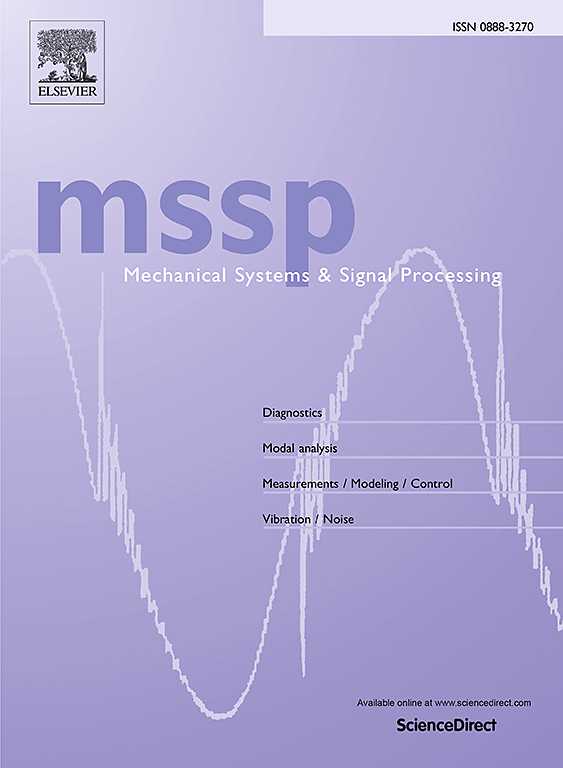Synergizing stopper mechanisms, coil configurations and quasi-linearity for enhanced adaptability in dual-beam 2DOF electromagnetic energy harvesters
IF 7.9
1区 工程技术
Q1 ENGINEERING, MECHANICAL
引用次数: 0
Abstract
This study investigates the benefits and challenges of asymmetric stopper control and different coil connection modes in dual beam harvester designs, aiming to optimize vibration energy harvesting systems for enhanced renewable energy applications and self-powered devices. The work demonstrates that the dynamic response and potential of the system affect the cantilever’s damping-stiffness matrix during impacts. General engineering analysis established limits for non-quasi-static linearity at stress ratio of 0.80 is the operational safety threshold before full fatigue occurs. Analytical and experimental validations at equivalent stress/bending moment reveal that polyvinylchloride laminate (PVC) attained the largest damping-critical stress gradient compared to other polymeric (polyether ether ketone (PEEK) and Glassfiber) or nonpolymeric (stainless steel and aluminum) material. Therefore, polymeric showed quick fatigue stress at respective maximum non-quasi-linear contact stiffness of 0.1150, 0.9495, 0.8575, 2.6352, 1.2206 at 80. 00 % fatigue stress level. Also, within tested the polymeric family, high damping-critical stress gradient indicates capacity for larger microstructural deformation before failure such that quasi linear weak softening approximation is acceptable when maximum bending to fatigue stress ratio ≤0.8. In evaluating the electrical connections, it was found that while individual transducer coils can power dual load sensors concurrently, bandwidth is compromised with materials exhibiting lower damping-critical stress gradients. Notably, the normalized power density improved by 91.45 %, reaching and 2.435 with fiberglass-aluminum cantilever pairs. Additionally, increasing the stopper gap enhances post-resonance bandwidth by up to 68.35 %, although this results in a power reduction of 31.40 %. These results underscore the trade-offs between harvested power and bandwidth, highlighting the efficacy of pairing polymeric and non-polymeric cantilevers in dual beam systems for optimized energy harvesting.

求助全文
约1分钟内获得全文
求助全文
来源期刊

Mechanical Systems and Signal Processing
工程技术-工程:机械
CiteScore
14.80
自引率
13.10%
发文量
1183
审稿时长
5.4 months
期刊介绍:
Journal Name: Mechanical Systems and Signal Processing (MSSP)
Interdisciplinary Focus:
Mechanical, Aerospace, and Civil Engineering
Purpose:Reporting scientific advancements of the highest quality
Arising from new techniques in sensing, instrumentation, signal processing, modelling, and control of dynamic systems
 求助内容:
求助内容: 应助结果提醒方式:
应助结果提醒方式:


